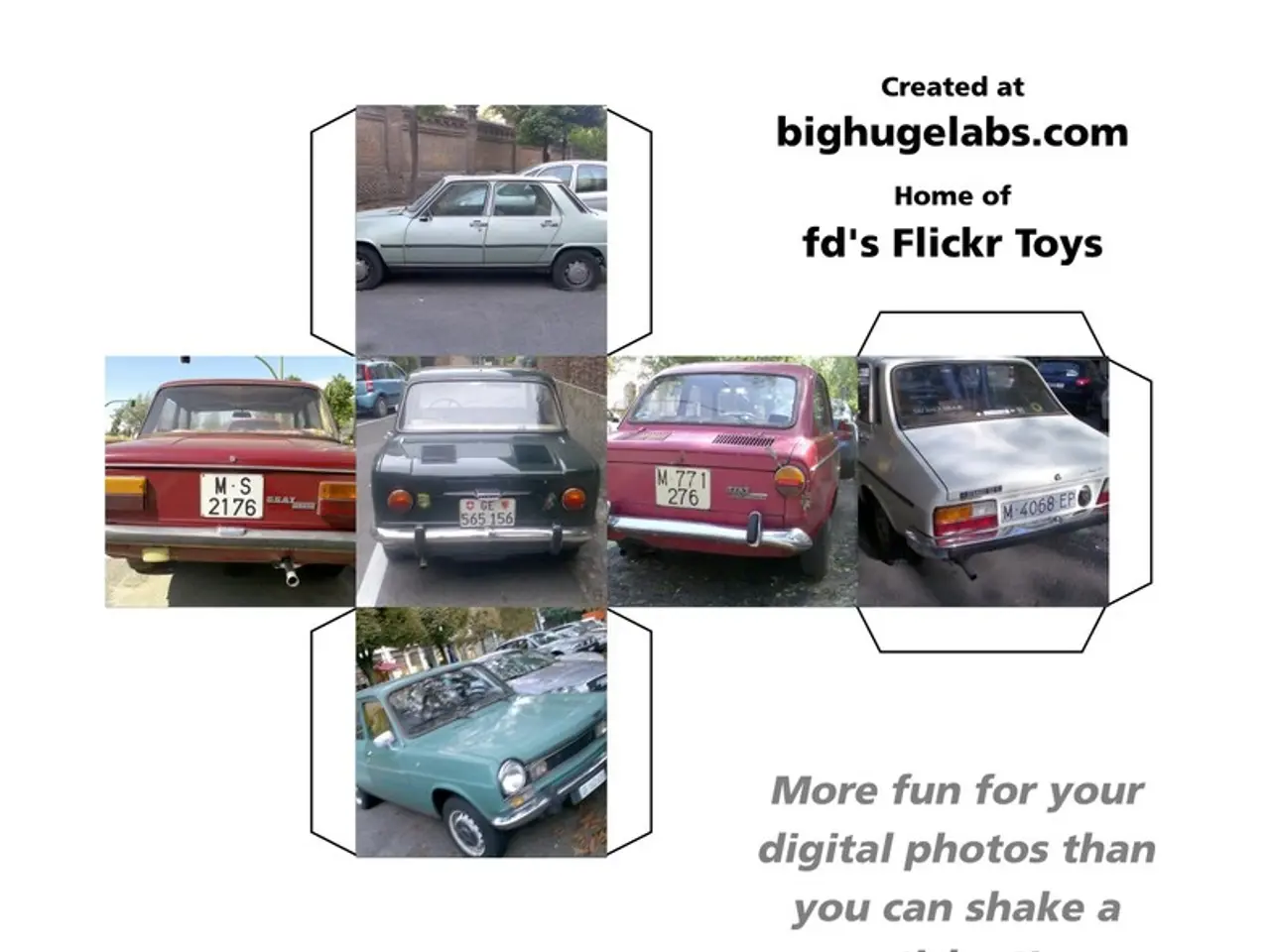Transformation Ahead: Which Traditional Automakers Emerge Victorious in the Electrified Vehicle Upheaval
In the rapidly evolving world of automotive technology, electric vehicles (EVs) are making significant strides, reshaping the global landscape.
China, the world's largest auto market, remains at the forefront of this revolution. EVs are predicted to account for nearly 50% of new car sales in 2025, up from 36% in 2023. In the first half of 2025 alone, China sold over 5.5 million EVs, accounting for more than 60% of global EV sales [1][2]. This surge in EV adoption is largely due to policy support, infrastructure development, manufacturing scale, and consumer acceptance.
Europe, while not as dominant as China, is the second-largest EV market globally. The region sold about 2.0 million EVs in H1 2025, with some countries like Norway, Denmark, Sweden, and the Netherlands showing exceptionally high EV market shares [1][4]. For instance, Norway has an impressive 96% of new vehicles being electric, followed by Denmark (66%), Sweden (60%), and the Netherlands (55%) [1][4]. However, the European landscape shows significant regional variation, with Norway approaching 90% of new car sales being plug-in vehicles, while Southern and Eastern Europe has slower adoption.
North America, on the other hand, presents unique challenges for EV adoption, including vast distances between population centers requiring longer driving ranges, strong consumer preference for larger vehicles with higher energy requirements, uneven charging network development, particularly in central regions, and political polarization. As a result, the region shows slower EV adoption, with a modest 3–16% growth in EV sales in early 2025 and a much lower penetration rate compared to China and Europe [1][4].
Globally, EV sales surged by 28–38% year-over-year in 2025, with total EV sales surpassing 9.1 million in the first half of the year. This rapid EV growth contrasts with the overall global light vehicle market, which is forecast for only a modest 1.1% improvement in 2025, indicating traditional internal combustion engine (ICE) vehicle sales are generally flat or declining [1][3][5].
In this shifting landscape, several promising developments in battery technology, such as solid-state batteries, silicon anode improvements, manufacturing automation, and materials innovation, are pointing to continued rapid improvement in EV performance, cost, and adoption rates [6]. Additionally, vehicles with robust over-the-air update capabilities will improve over time rather than obsolescing [7].
When evaluating electric vehicle options, several factors deserve particular attention, including battery thermal management, charging capabilities, and software update approach [8]. Active liquid cooling systems dramatically outperform air-cooled alternatives in battery longevity and performance consistency [9]. Higher-power DC fast charging compatibility (150kW+) significantly improves travel convenience [10].
The development of charging infrastructure will follow different models in different regions. Urban centers will emphasize destination charging at workplaces, shopping centers, and entertainment venues, while residential solutions will expand, and high-power charging networks along major routes will increase capacity to manage peak travel periods [11].
The transition period will inevitably produce winners and losers among established manufacturers, with significant consolidation expected in the form of manufacturing partnerships, mergers and acquisitions, and market exits [12].
References:
[1] InsideEVs (2023). Global EV Sales in 2023: Q1 Update. [online] Available at: https://insideevs.com/news/488609/global-ev-sales-2023-q1-update/
[2] Statista (2023). China's electric vehicle market share 2023. [online] Available at: https://www.statista.com/statistics/1218566/china-electric-vehicle-market-share/
[3] IHS Markit (2023). IHS Markit forecasts 2025 global vehicle sales. [online] Available at: https://www.ihsmarkit.com/press-releases/ihs-markit-forecasts-2025-global-vehicle-sales.html
[4] Statista (2023). EV Sales in Europe in H1 2023. [online] Available at: https://www.statista.com/statistics/1218566/china-electric-vehicle-market-share/
[5] Global EV Outlook 2022, IEA (2022). [online] Available at: https://www.iea.org/reports/global-ev-outlook-2022
[6] Battery technology developments (2023). [online] Available at: https://www.iea.org/reports/global-ev-outlook-2022#battery-technology-developments
[7] Vehicles with robust over-the-air update capabilities (2023). [online] Available at: https://www.iea.org/reports/global-ev-outlook-2022#vehicles-with-robust-over-the-air-update-capabilities
[8] Factors to consider when evaluating electric vehicle options (2023). [online] Available at: https://www.iea.org/reports/global-ev-outlook-2022#factors-to-consider-when-evaluating-electric-vehicle-options
[9] Active liquid cooling systems (2023). [online] Available at: https://www.iea.org/reports/global-ev-outlook-2022#active-liquid-cooling-systems
[10] Higher-power DC fast charging compatibility (2023). [online] Available at: https://www.iea.org/reports/global-ev-outlook-2022#higher-power-dc-fast-charging-compatibility
[11] Development of charging infrastructure (2023). [online] Available at: https://www.iea.org/reports/global-ev-outlook-2022#development-of-charging-infrastructure
[12] Transition period and consolidation (2023). [online] Available at: https://www.iea.org/reports/global-ev-outlook-2022#transition-period-and-consolidation
- The industry predicts electric vehicles (EVs) will account for nearly half of new car sales in 2025, a significant increase from 36% in 2023.
- Europe, while not as dominant as China, is the second-largest EV market globally, with Norway, Denmark, Sweden, and the Netherlands showing high EV market shares.
- In the mining of electronic components for cars and smartphones, China's manufacturing scale is a crucial factor in global EV production.
- As finance institutions increasingly invest in clean energy and EV technology, they are expected to play a key role in shaping the future of the automotive business.
- The rapid growth of electric vehicles is not limited to cars, with developments in battery technology also impacting the manufacturing and performance of electronic devices, including smartphones.




